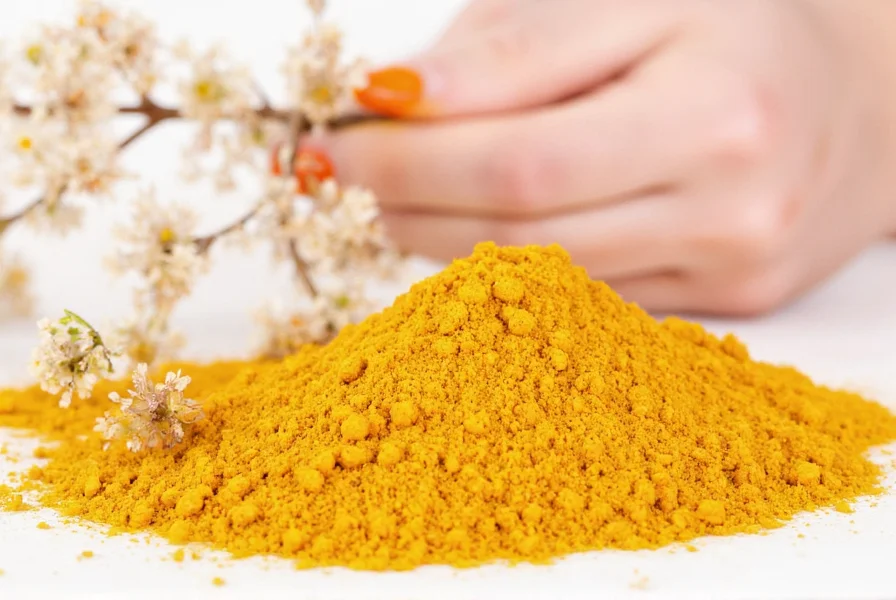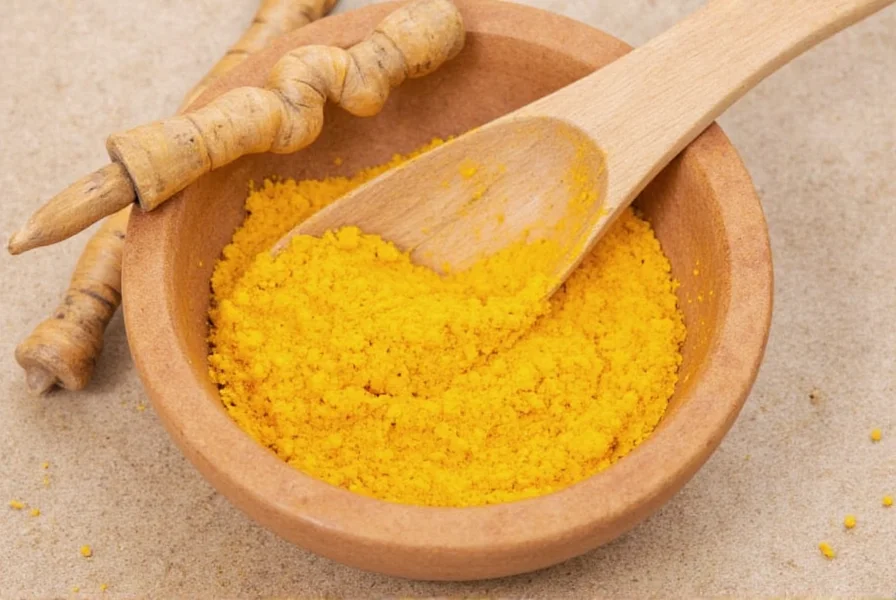Black spots, or hyperpigmentation, affect millions seeking natural skincare solutions. Turmeric, a golden spice used for centuries in Ayurvedic medicine, has gained popularity as a potential remedy. This comprehensive guide examines what science says about turmeric for black spots, how to use it safely, and realistic expectations for results.
The Science Behind Turmeric and Skin Pigmentation
Curcumin, turmeric's active compound, demonstrates several properties relevant to skin health. Research published in Phytotherapy Research indicates curcumin inhibits melanin production by targeting tyrosinase activity—the enzyme responsible for skin pigmentation. A 2019 Journal of Cosmetic Dermatology study found topical curcumin formulations reduced hyperpigmentation in 67% of participants after 8 weeks, though results were modest compared to hydroquinone treatments.
However, most studies on turmeric for skin discoloration have been small-scale or conducted in laboratory settings. The American Academy of Dermatology notes that while natural ingredients like turmeric show promise, they generally produce less dramatic results than clinically-proven treatments like retinoids or chemical peels.

How Turmeric May Help with Black Spots
Turmeric's potential benefits for hyperpigmentation stem from multiple mechanisms:
- Antioxidant protection against UV damage that causes dark spots
- Anti-inflammatory effects that may reduce post-inflammatory hyperpigmentation
- Tyrosinase inhibition that potentially slows melanin production
- Wound healing properties that might prevent dark spots after skin injuries
It's important to understand that turmeric works gradually. Unlike prescription treatments that may show results in weeks, natural remedies typically require consistent application over 2-3 months to assess effectiveness. Individual results vary based on skin type, the cause of hyperpigmentation, and the specific turmeric formulation used.
Effective Ways to Use Turmeric for Dark Spots
For those interested in trying turmeric for black spots, these evidence-informed methods offer the best potential:
| Method | Ingredients | Application | Frequency |
|---|---|---|---|
| Turmeric honey mask | 1 tsp turmeric, 2 tsp raw honey | Apply to clean skin, leave 15-20 minutes | 2-3 times weekly |
| Turmeric yogurt treatment | 1/2 tsp turmeric, 1 tbsp plain yogurt | Apply to affected areas, rinse after 10 minutes | 3 times weekly |
| Turmeric oil serum | 1/4 tsp turmeric powder, 1 tbsp carrier oil | Gently massage into skin after cleansing | Nightly |
When preparing turmeric treatments at home, use high-quality, organic turmeric powder to minimize contaminants. Always perform a patch test 24 hours before full application to check for allergic reactions. The golden rule for how to use turmeric for hyperpigmentation effectively is consistency combined with sun protection—UV exposure counteracts any potential lightening effects.
Safety Considerations and Potential Side Effects
While generally safe, turmeric can cause issues for some users. The most common problem is temporary skin staining—turmeric's vibrant color can leave a yellow tint, especially on lighter skin tones. This typically fades within hours but can be minimized by:
- Using lower concentrations (1/4 to 1/2 teaspoon per application)
- Adding milk or yogurt to formulations
- Rinsing thoroughly with warm water
- Following with a gentle cleanser
More serious concerns include potential allergic reactions, particularly for those with sensitive skin or allergies to related plants. Discontinue use immediately if you experience redness, itching, or swelling. Individuals with bleeding disorders should consult a physician before using turmeric extensively, as it may affect blood clotting.
Managing Expectations: Turmeric vs. Professional Treatments
Understanding the limitations of natural remedies for dark spots with turmeric is crucial. While some users report noticeable improvement, turmeric generally produces more subtle results than medical treatments. A comparative analysis in Dermatologic Surgery found that while turmeric showed measurable improvement in hyperpigmentation, results were approximately 40% less significant than prescription hydroquinone after 12 weeks.
For stubborn black spots, consider these options in consultation with a dermatologist:
- Vitamin C serums (10-20% concentration)
- Retinoids (prescription or over-the-counter)
- Chemical peels (glycolic or salicylic acid)
- Laser treatments for severe cases
Many skincare professionals recommend combining natural approaches like turmeric with proven treatments for enhanced results. For example, using a turmeric and honey for dark spots mask alongside a vitamin C serum may provide complementary benefits through different mechanisms of action.
When to Consult a Dermatologist
While exploring how to use turmeric for black spots at home, recognize when professional help is needed. Consult a dermatologist if:
- Black spots change in size, shape, or color rapidly
- You experience pain, itching, or other discomfort
- Spots appear suddenly without clear cause
- Home treatments show no improvement after 3 months
- You have a history of skin cancer
Some forms of hyperpigmentation indicate underlying health conditions that require medical diagnosis and treatment. A dermatologist can determine whether your black spots are simply cosmetic concerns or symptoms needing medical attention.
Conclusion: Realistic Approach to Turmeric for Hyperpigmentation
Turmeric shows promise as a complementary approach for managing black spots, supported by preliminary research on its skin-brightening properties. While not a miracle cure, it may provide modest improvement for some users when used consistently alongside sun protection. The key to success with turmeric face mask for black spots lies in realistic expectations, proper application techniques, and understanding that natural remedies typically work more gradually than medical treatments.
For optimal results, combine turmeric treatments with daily broad-spectrum sunscreen (SPF 30+), as UV exposure is the primary cause of most hyperpigmentation. Remember that skincare is highly individual—what works for one person may not work for another. Patience and consistency remain essential when exploring natural approaches to skin discoloration.
Frequently Asked Questions
How long does it take for turmeric to remove black spots?
Most users report noticing subtle improvements after 4-6 weeks of consistent twice-weekly application, with more significant results typically visible after 2-3 months. Individual results vary based on skin type, the cause of hyperpigmentation, and formulation used. Turmeric generally works more gradually than clinical treatments.
Can turmeric permanently remove dark spots?
Turmeric may help fade existing dark spots but doesn't provide permanent removal. Like most hyperpigmentation treatments, maintenance is typically required as new spots can form with sun exposure. For lasting results, consistent sun protection is essential alongside any treatment.
Does turmeric work better than lemon for dark spots?
Research suggests turmeric generally provides more consistent results with fewer risks than lemon juice. While both have skin-lightening properties, lemon's high acidity can cause irritation and photosensitivity, potentially worsening hyperpigmentation. Turmeric offers anti-inflammatory benefits alongside its pigment-reducing properties.
Can I leave turmeric on my face overnight for black spots?
While some formulations like diluted turmeric oil serums can be left overnight, pure turmeric masks should not be left on for extended periods. Overnight application increases staining risk and potential for irritation. For best results with turmeric for black spots, limit direct contact to 15-20 minutes before rinsing.
Which type of turmeric is best for dark spots?
Organic, high-quality turmeric powder with verified curcumin content (typically 3-5%) works best for skincare. Some specialized cosmetic formulations use standardized curcumin extracts for enhanced potency. Avoid turmeric supplements intended for internal use, as they may contain additives not suitable for topical application.











 浙公网安备
33010002000092号
浙公网安备
33010002000092号 浙B2-20120091-4
浙B2-20120091-4